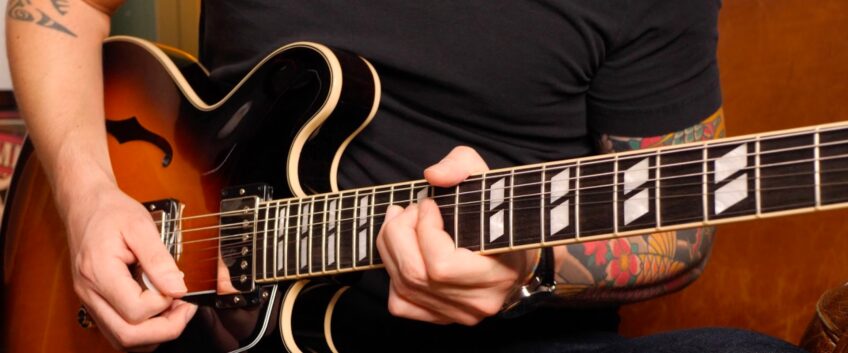
5 blues licks in G [Guitar Pro tabs with audio track]
- 5-plans-de-blues-florent-passamonti-1.gp
If you don’t have the opportunity to play with other musicians, I suggest you bring the band directly to your home! The idea of this virtual jam proposed on my YouTube channel is very simple since it is about creating a musical dialogue between you and me. Indeed, you’ll find in this song some parts without any solo during which you’ll be able to improvise your own solo.
But before you jump into the lion’s den, here are some tips and ideas that might be useful.
Grab your guitar, let’s go!
Understanding the 12-measure grid
We are in the key of G. The harmonic progression is quite simple and is based on 3 chords (degree I = G7 / degree IV = C7 / degree V = D7) arranged according to a pre-established order. We speak of a grid. We start with G7 and then, in bar 2, we find the chord of the IVth degree in order to bring a light harmonic movement: it is what we call a “quick change”.
As this variation is not imposed, we could also have stayed four measures on the G7 chord. The rest of the grid follows a very classical pattern in the alternation of degrees: two measures of IV (C7), two measures of I (G7) and then the sequence V-IV-I-I (D7-C7-G7-G7).
Because of its internal structure, easily divided into groups of two or four bars, the blues is an ideal playground for practicing the famous “question and answer” concept.
The first round
But before we go deep into that, let me first start with a full grid.
The inspiration for this song is Come When I Call by John Mayer. A quick look at the score and you’ll see the natural breakdown of this 12-bar grid. Indeed, each group of four bars can be divided into 2:
2 bars of rhythm and 2 bars of solo phrasing.
We speak about antecedent and consequent. The rhythmic part supports the groove of the piece and beats 2 and 4 (also called “weak beats”). As for the lead phrases, they are based on the famous minor penta position (here in G, 3rd fret) or its extension.
Jam: the 5 licks explained
Now everyone has 4 bars to play and this dialogue last during 3 full grids.
Lick n° 1 (Bars 1-4)
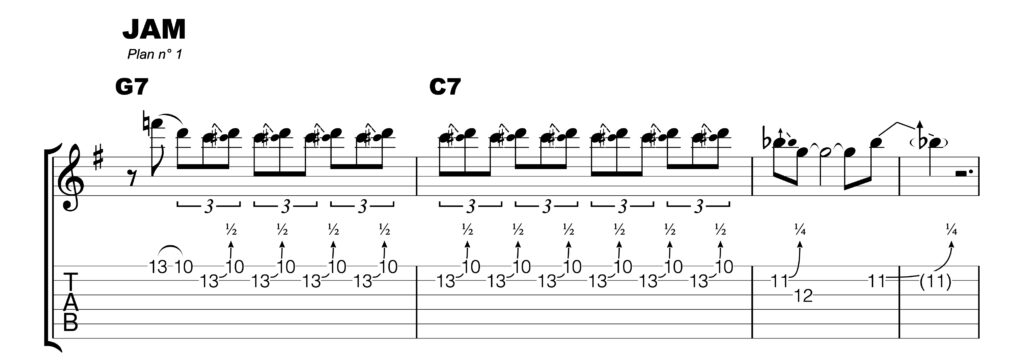
In blues or rock music, repeating notes in licks is cool and sounds well. Here we are in 10th position. This type of phrase can of course be extended as long as you like. Nevertheless, be careful to negotiate the exit.
Lick n° 2 (bars 9-12)

One of my favorite lick ideas is to focus harmonically on the V-IV sequence (D7-C7). You will notice the perfect symmetry between the first 2 bars, and also the use of chromaticism to bring an almost jazzy side. The final phrase is based on the famous minor penta position. Pay attention to the effects and techniques that make the blues so special.
Lick n° 3 (bars 5-8)
For this lick, I got inspired by BB King.
The famous bluesman was accustomed to licks with the tonic located on the 2nd string and blocked with the index finger: it is called “BB Box“. To give life to this kind of phrase, the bends are essential. This is followed by a transverse flight to the tonic note G, on the high E string at the 15th fret.

Lick n° 4 (bars 1-4)
The position used is the same as in the first lick. But this time there are more effects and movements. You can find that kind of lick in Eric Clapton‘s playing.

Lick n° 5 (bars 9-12)
Here is the beginning of a lick borrowed from the Delta Blues and which follows the V-IV sequence. Note that the beginning is built on the chord triad before introducing a descending chromaticism and various enrichments. The end is a good illustration of the transversal use of the minor penta.
Guitar Pro 8
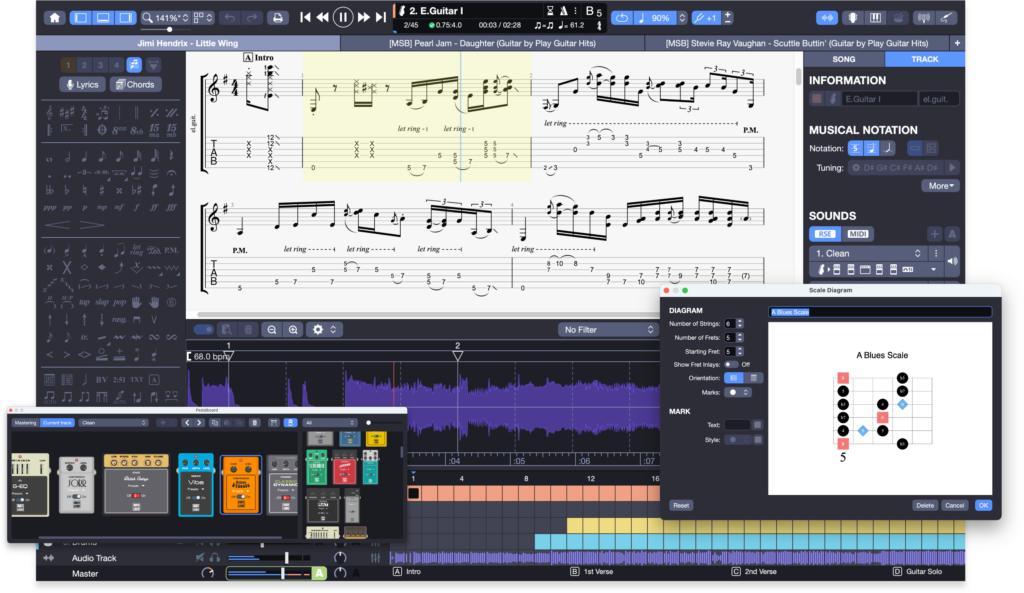
Download the trial version of Guitar Pro 8 to play the scores featured in this article.
Leave a comment
Your email address will not be published.
| Title | Artist | |
|---|---|---|
| Peaches (from "Super Mario") | Jack Black | |
Hotel California

|
The Eagles | |
| Let It Burn | Volbeat | |
| Trail of Broken Hearts | DragonForce | |
Fat Lip

|
Sum 41 |

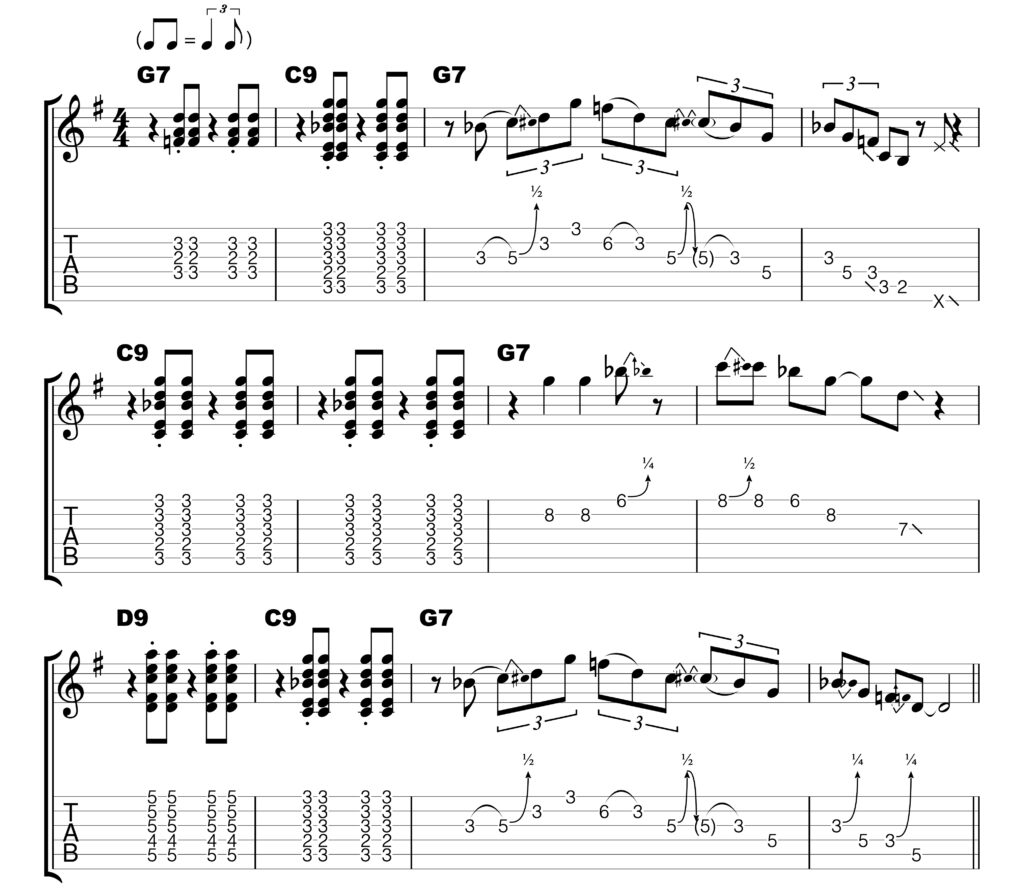
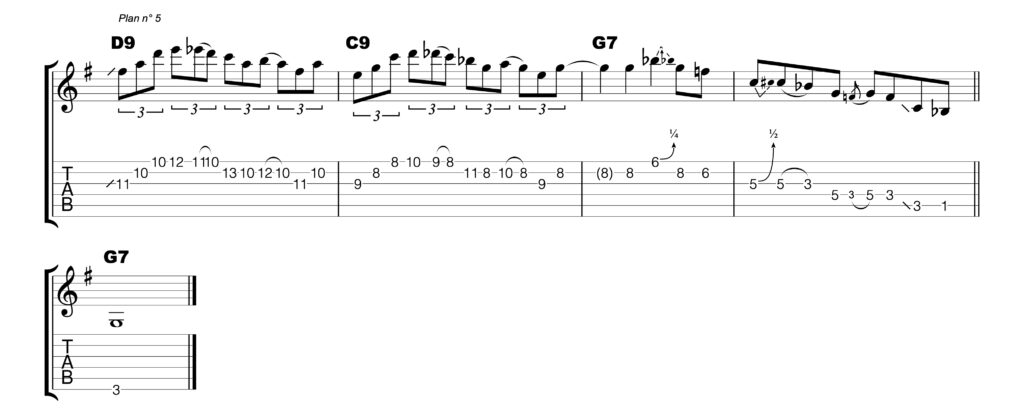

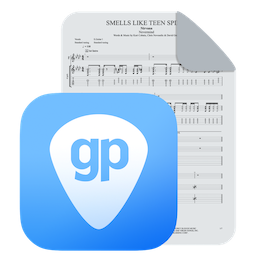
3 Comments
toujours aussi bon et clair .une vraie motivation pour progresser
Very appreciated!
Thank you very much Maisto!